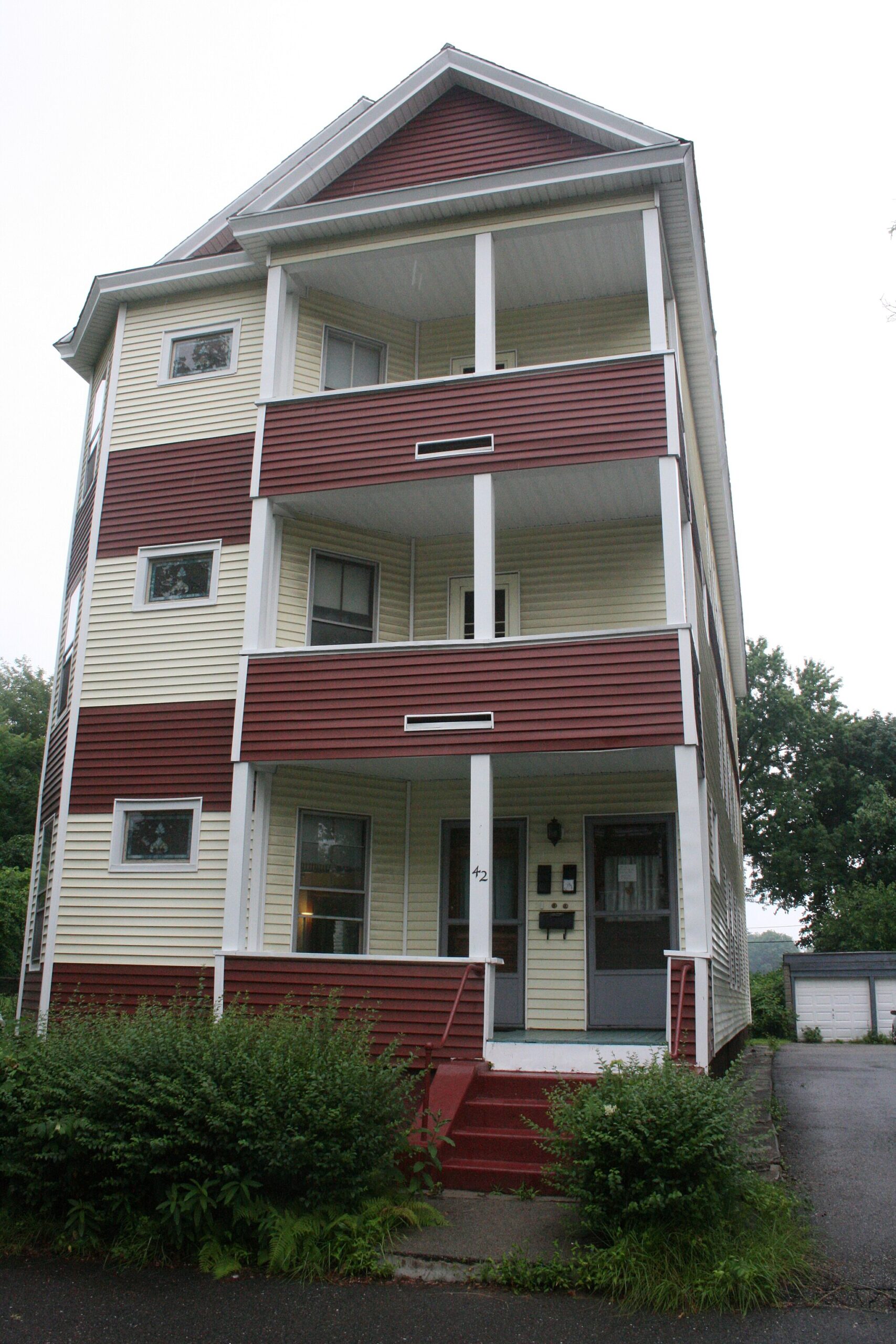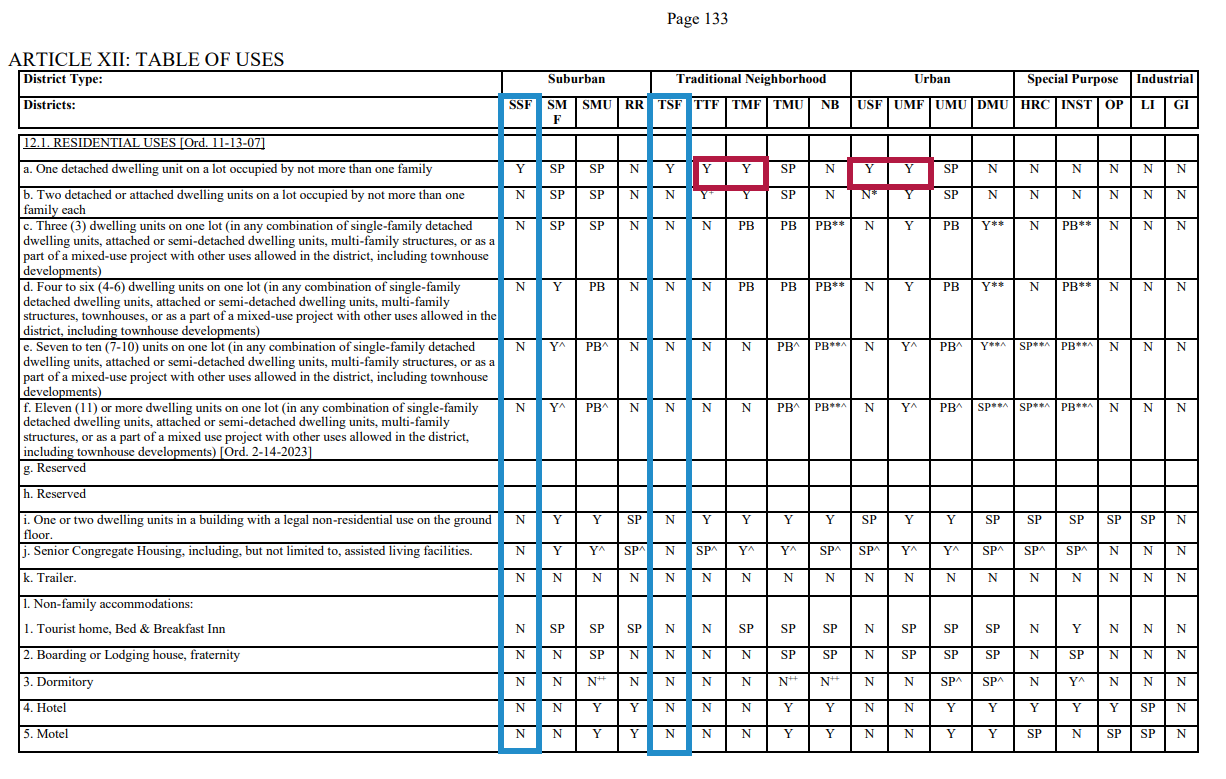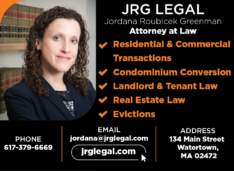State Error in Your Favor? Or a Bonanza for ADUs?
. Posted in News - 0 Comments
By Eric Weld, MassLandlords, Inc.
ADUs are now allowed to be built by right, not only on single-family only lots, but on property in any zoning district where a single-family dwelling is permitted in Massachusetts.

Triple-decker lots like this one in Worcester might qualify (depending on specific zoning code) for an ADU addition, according to new ADU-by-right regulations recently published by the Executive Office of Housing and Livable Communities (EOHLC). Cc by-sa Wikimedia Commons Pvmoutside
That’s potentially a lot of districts, and may go beyond legislative intent. But according to final regulations, 760 CMR 71.00, published by the Executive Office of Housing and Livable Communities (EOHLC) on Feb. 2, 2025, accessory-dwelling units (ADUs) are permitted in all single-family residential zoning districts. The regulations define a single-family residential zoning district as “Any Zoning District where Single-Family Residential Dwellings are a permitted or an allowable use.” This definition was in early drafts, published in December 2024, and survived a period of public scrutiny and comment before its final, official publication.
The EOHLC’s definition outlines ADU-by-right provisions in the Affordable Homes Act, a $5.16 billion housing bond will, which became law on Aug. 6, 2024.

Landlords invited to build ADUs! Whether it’s a state error or an intentional broadening of regulatory language to permit ADUs by right on “any Zoning District where Single-Family Residential Dwellings are a permitted or an allowable use,” we applaud the state’s new policy. Single-family dwellings are permitted in a variety of zoned districts, including some multifamily districts. ADUs for all! CC BY-SA MassLandlords 4.0
ADUs Across Many Zones
The EOHLC regulations give much broader authority to build ADUs than has been debated across the state and in the legislature for several years. Single-family dwellings are a permitted use of land in a variety of zoning districts beyond those meant only for one detached single-family dwelling, including some where multifamily dwellings are also permitted, as well as businesses and offices, and sometimes schools and medical facilities.
Communities around Boston and other parts of the state have wrestled for years over the issue of facilitating the building of ADUs on privately owned property. Proponents of ADUs have long argued that these small, independent dwellings provide homeowners with a convenient, low-impact way to enhance their income while also adding affordable housing to the community. Done well, an ADU can also boost property values with added functionality.
Opponents counter that allowing a proliferation of ADUs will add to traffic congestion, burden public services such as schools and hospitals and, generally, change communities’ character, and should therefore be tightly regulated.
The Massachusetts legislature took on the debate in the leadup to signing of the Affordable Homes Act. As a shortage of housing continues to push up home and rent costs in Massachusetts and other states, ADUs have gained momentum as one piece of the puzzle. At the same time, single-family zoning – a type of outdated land use regulation (with racist origins) that only allows one detached single-family dwelling on a lot – has fallen out of vogue in many communities, and is often not considered the “highest and best use” of a piece of property.
Still, these debates centered around allowing the addition of an ADU on lots zoned for one detached single-family dwelling only. Absent from the debates has been consideration of allowing ADUs in other types of zoning districts where single-family dwellings are also permitted, such as, say, a lot that would allow a triple-decker or a duplex.
What’s in a Word?
The EOHLC’s regulatory definition of a single-family residential zoning district diverges from traditional definitions. Most policy documents define a single-family residential zoning district as one in which only single-family dwellings are a permitted land use. Often, these definitions specify only detached single-family dwellings.
The difference in wording between the traditional and EOHLC’s new definition – only single-family dwellings versus any district permitting single-family dwellings – may be conservationally minimal, but the connotations are potentially impactful.
In many Massachusetts towns and cities, single-family dwellings are a permitted or allowable use in a variety of zoning districts, including districts that also allow multifamily buildings, such as triple-deckers.
Looking at the city of Worcester’s permitted uses by zoning district, single-family dwellings are a permitted use in more than two dozen districts. Some of these are residential districts for single-family buildings (attached, detached and semi-detached) (RS-10, RS-7), some are for residential limited and general (RL-7, RG-5). Others are business-zoned districts of various required area ratios (BO-1, BO-2, BL-1, BG-2, BG-3, BG-4), and institutional districts, zoned for educational use (IN-S) and medical use (IN-H).
The city of Lowell, whose city council defeated a proposed ordinance allowing ADUs by right in winter 2024, similarly permits single-family dwellings across several distinctly zoned districts, including multifamily. In exclusive Lexington, single-family dwellings (called “one-family dwelling” in its permitted uses table) are allowed in districts zoned for one-family dwelling (RO, RS), two-family dwelling (RT) and commercial neighborhood (CN), which allows small businesses within residential areas.
The state law says a property owner may build an ADU by right in a single-family residential zoning district, which is now defined as any zoning district where single-family dwellings are permitted. By this definition, an ADU is allowed to be built by right on the same lot with a triple-decker, for example, or, say, a duplex or other multifamily building.
Landlords Now Included
When Gov. Maura Healey signed the Affordable Homes Act (MGL 150 of the Acts of 2024), her administration estimated the ADU zoning change may result in 8,000-10,000 new ADUs in five years.
Specifically, the housing bond bill altered the Zoning Act, MGL Ch. 40A, allowing ADUs of 900 square feet or less to be built by right in single-family residential zoning districts. “No zoning ordinance or by-law shall prohibit, unreasonably restrict or require a special permit or other discretionary zoning approval for the use of land or structures for a single accessory dwelling unit, or the rental thereof, in a single-family residential zoning district,” states the housing law.
In other words, if you own property in a district zoned for single-family, you now have the right to obtain permits and build an ADU on your land without the burden of appealing to the zoning board or other municipal boards for special consideration or variance.
The EOHLC was tasked with defining tenets and terms of the law, including “single-family residential zoning district.” This is standard protocol following passage of laws. State agencies are typically charged with devising rules, under the Code of Massachusetts Regulations (CMR), about how a law will be defined and administered.
If the EOHLC definition of a single-family residential zoning district, as “any Zoning District where Single-Family Residential Dwellings are a permitted or an allowable use,” is intentional, we applaud the state government’s capacious authorization.
Ironically, the projection of 8,000-10,000 new ADUs came out of the EOHLC, according to a press release announcing the new ADU regulations. But that projection was based on single-family only parcels, which would have excluded landlords from taking advantage of ADUs by right. If landlords are now allowed to participate in ADU expansion – on lots with offices, small businesses, next to triple-deckers – via the EOHLC’s definition of single-family zoned districts, it could create units more than 10 times their estimate.

Under the Housing Bond Bill text, there are only two “single family zoning districts” in Lowell. These are SSF and TSF. Under the EOHLC regulations, there are six districts in which a single family dwelling is an allowable use. These are SSF and TSF as before, but also TTF, TMF, USF and UMF. Zoning Book for the City of Lowell, Massachusetts as amended through October 24, 2023, page 133. https://www.lowellma.gov/DocumentCenter/View/23260/Lowell-Zoning-Ordinance
A Lesson in Lowell
As a state law, the Affordable Homes Act’s ADU section supersedes local ordinances and bylaws of municipalities that have them. Local governments may implement new or redrafted ADU ordinances with reasonable restrictions – e.g., bans on short-term ADU rentals – but they must comply with Ch. 150 parameters. Communities, including Lowell and a few others, may no longer require special permitting for ADUs.
Boston, as the only municipality to be exempt from Ch. 40A (the capital city’s zoning is governed by Ch. 665 of the Acts of 1956), is also exempt from the housing bond bill’s ADU provision. The state capital is devising its own ADU law.
For Lowell, the new law renders moot the city’s 2024 concerted effort to retain special permitting for ADUs. The city seemed headed for approval of an ADU by-right ordinance until a vocal group of citizens in affluent districts organized against it. The ordinance was voted down when two council members and the mayor (who presides over their city council) changed their stances in deference to some of their constituents.
Lowell’s was a contentious, publicly argued battle that went on for more than a year. Despite acknowledging the need for more housing-positive policies and affordable housing, those opposing ADUs by right in Lowell exaggerated the impacts with signs warning of “the death of single-family zoning” and compromises to the “character” of their neighborhoods. The NIMBY stance prevailed, and stood for about one year until the state law took effect.
Lowell’s lesson may be an allegorical example for other municipalities in the state fighting to block affordable housing and increased density within their city limits. More housing is a priority, and is desperately needed, all across Massachusetts. Communities obstructing that priority may find their legislative leverage usurped by the state government.
Litigation Next?
In the event a triple-decker or a small business owner applies for ADU permitting to build on their property, local planning, zoning or building boards may balk and force litigation. A town could deny a landlord’s ADU permit on the basis of state law; the landlord would then have to sue the town, citing the EOHLC regulation.
In such a case, our reading of the law might be challenged. Indeed, just above its definition of Single-Family Residential Zoning District, EOHLC regulations define a Single-Family Residential Dwelling as “A structure on a Lot containing not more than one Dwelling Unit.”
In a court of law, how might these circular definitions be reconciled? It’s possible EOHLC meant that its definition of a single-family zoning district implied an addendum at the end, as such: “…and which only permit one single-family dwelling.”
For now, thanks to 760 CMR 71.00 as written, we see the slate as unexpectedly open for ADU construction in a residential zone near you. If you try for an ADU on a multifamily-zoned piece of land, let us know how it goes. Always consult an attorney before taking any action that could affects your rights.




